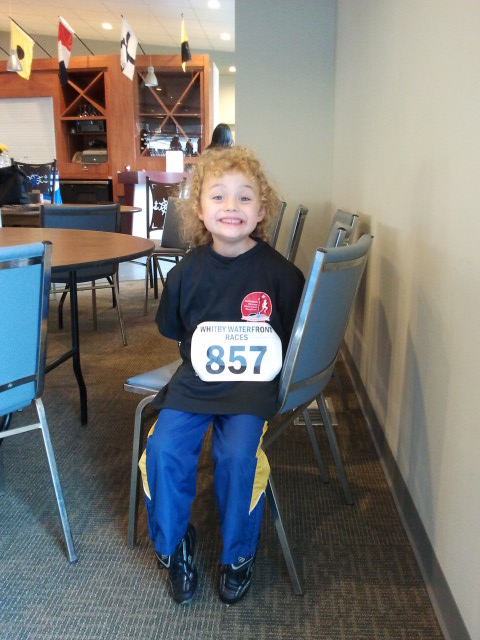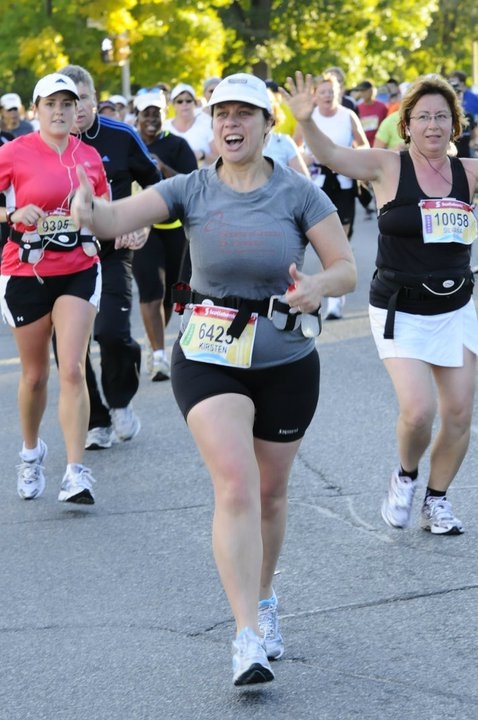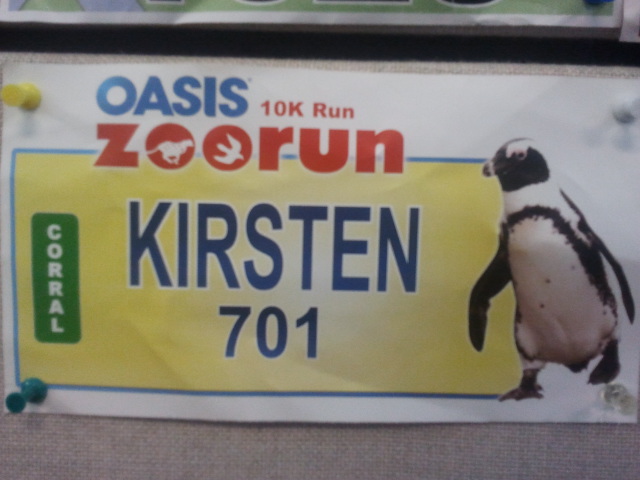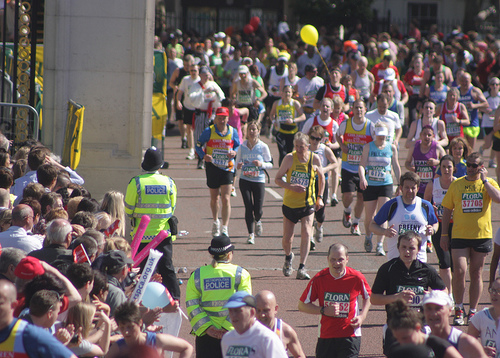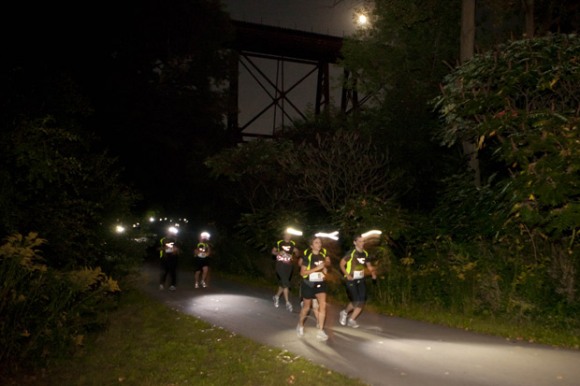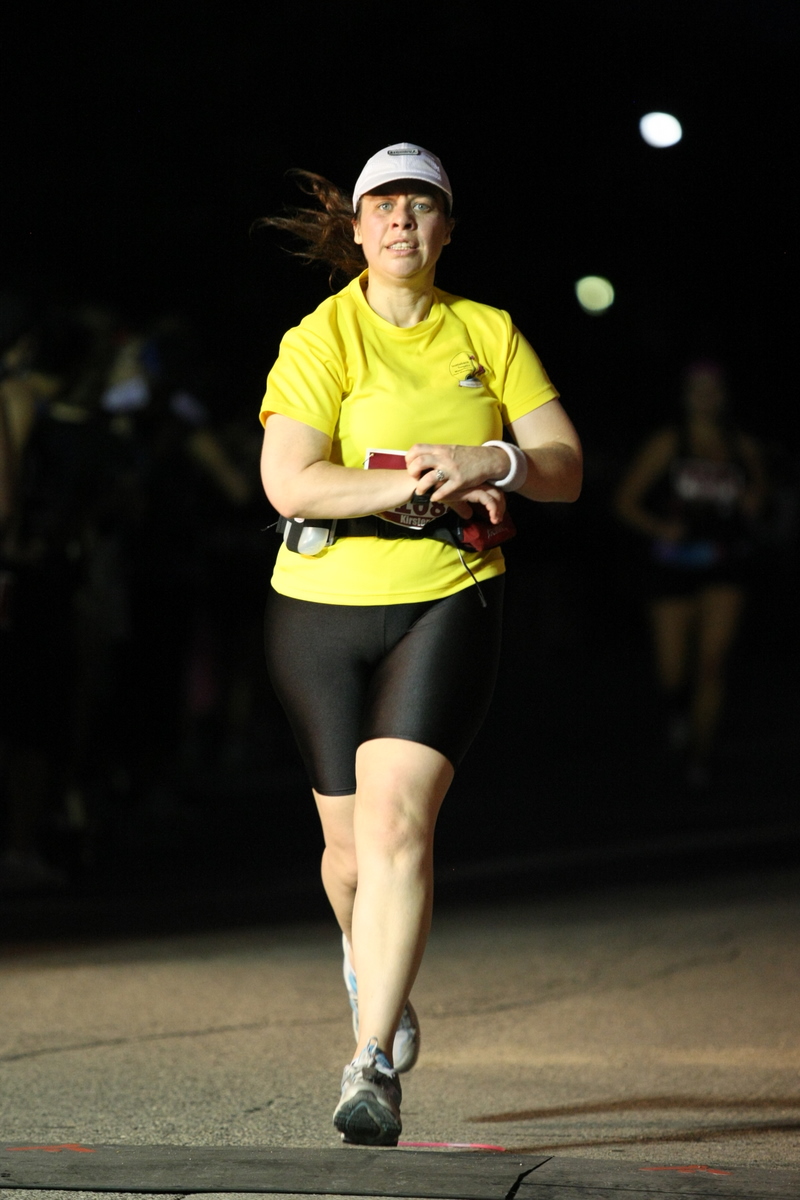My son James, who is all of five years old, stood beside me at the start line of his first-ever race. He wore his newly acquired official race T-shirt and proudly sported the number 857. I went over some basic rules with him one last time. Look where you’re going, not at me – I will be right beside you. Go at the speed that’s comfortable for you, without worrying about what everyone else is doing. Most important, have fun. He added a rule of his own: keep your eyes open at all times. Sounded perfectly reasonable to me.
And then, with the blast of the starter’s siren, 41 kids started their 1km race. The vision of 41 little pairs of legs dashing off down the road was the cutest sight ever. Many parents ran alongside their kids, myself included. At first, James had a little trouble focusing and I had to keep telling him to look where he was going. Once his attention was on the road ahead, the kid took off like a shot. I almost choked on his dust.
Throughout the 1km, James was weaving a path for himself, overtaking other kids. From time to time he slowed to a walk for a few seconds, and then he’d be off again. He started to tire in the last two hundred metres or so, but by then he could see the finish line, and in the spirit of a true runner, he kept going and finished the race at a sprint. The smile on his face as he received his finishers’ medal could have split his face in two. He was immensely proud of himself, and rightly so.
He finished in a time of 7:06, coming in 23rd out of 41 kids. Pretty darned good for a five-year-old running his first race.
Then it was my turn. James joined his dad and I lined up at the start for my 10K race. I didn’t really expect anything from this race. My running has been somewhat sporadic lately, and I hadn’t bothered to train for this race. I was approaching it more as a fun run than anything else.
Fun run or no, 10K is still 10K, so I was a little alarmed when I ran my first kilometre in 6:10 – way too fast considering that I was aiming for a ballpark average of 6:30 minutes per kilometre. If I kept going at the pace I started at, I would burn myself out somewhere around the halfway point. I tried to rein myself in to a 6:30 pace, and ended up having a conversation with my legs that went something like this:
Me: Legs, you’re going too fast. Slow down.
Legs: What do you mean, slow down? It’s a race.
Me: If you keep going at this rate, you’re going to conk out in the seventh kilometre.
Legs: But I feel gooooood. And look, you’re already in the fourth kilometre and you’re doing just fine.
Me: Hmmmm, you make a good point. We’re almost halfway already.
Legs: So will you please chill out and let me do my job?
Me: OK, go!
During the eight kilometre the wind came up strongly and I started to tire.
“Told you so,” I said to my legs, that had slowed down considerably.
“Shut up,” they replied, picking up the pace again.
With about 400 metres to go, I was spent. I was on the verge of just packing it in and walking the rest of the way, but standing on the corner, cheering me on, I saw my husband and son. If James could do it, so can I, I thought. I dug deep and kept going, and all of a sudden I was crossing the finish line amid cheers and applause.
In the end, my legs turned out to be right. My time was 1:02:54, which pretty much squashed my previous personal best (1:05:25).
The biggest triumph of the day? Being there for my son’s first-ever race. You can run half-marathons and marathons, set personal best times and win medals. But is there any greater honour that can be bestowed on a runner than to witness and be a part of the emergence of a brand new runner?





